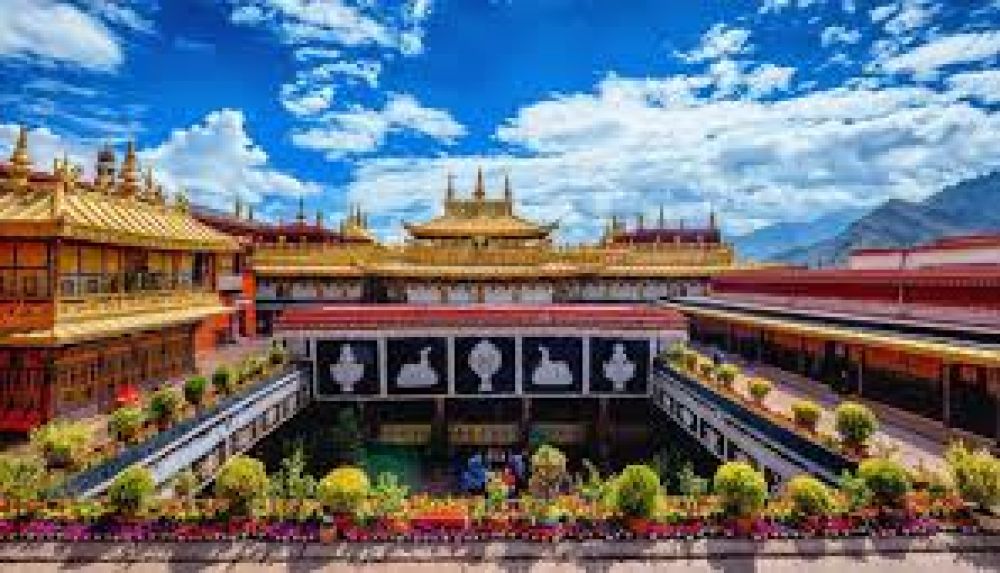

Jokhang Temple, situated at the heart of Lhasa, is the most revered religious structure in Tibet. Its roots trace back to the 7th century, a time when King Songtsen Gampo, who is highly credited for bringing Buddhism into Tibet, constructed the temple to commemorate his marriage to Princess Wencheng of the Chinese Tang dynasty. The temple became an emblem of the amalgamation of Tibetan, Nepalese, and Chinese architectural styles, thus creating a unique design specific to the region's religious art and architecture.
As the spiritual center of Tibet, Jokhang Temple plays a crucial role not only as a place of worship but also in the annual events like the Great Prayer Festival. Over time, it has anchored the development of the Barkhor market, which encircles the temple and forms part of the UNESCO World Heritage Site along with the Potala Palace and Norbulingka.
The history of tourism at the Jokhang Temple correlates closely with Tibet's accessibility to foreigners. Historically, the region's remote location and political climate made it challenging for widespread international tourism to develop. It wasn't until the opening of the Qinghai-Tibet Railway in 2006 that tourism experienced a significant increase, allowing more visitors to reach Lhasa comfortably.
Tourists have since flocked to Jokhang Temple to witness its spiritual ceremonies and to see the life-sized statue of the young Buddha Sakyamuni - the most treasured artefact in the temple. Despite various regulations and limitations on travel, particularly for foreign tourists, the Jokhang Temple remains an indispensable experience for those interested in Tibetan culture and religion.
The latest trends in tourism at Jokhang Temple reflect a shift towards responsible and sustainable travel. Visitors are increasingly seeking authentic cultural experiences and are more aware of the impacts of their travel.
There is a growing emphasis on respectful visitation practices as the temple is a sacred site for Tibetan Buddhists. Tourists are encouraged to appreciate the temple's atmosphere with an attitude of reverence and to interact with the local community in a manner that supports their traditions and economy. In addition, digital technology advances are enhancing tourists' experiences through virtual tours and augmented reality apps, catering to those unable to visit in person.
With China's global rise as a tourism power, the Chinese government has been keen on developing tourism in Tibet while also attempting to manage the delicate balance between commercialism and the preservation of the region's deeply rooted spiritual traditions. The future of tourism at Jokhang Temple is likely to be influenced by these broader trends, with the dual goals of preserving the sacred integrity of the site while accommodating growing numbers of domestic and international visitors.